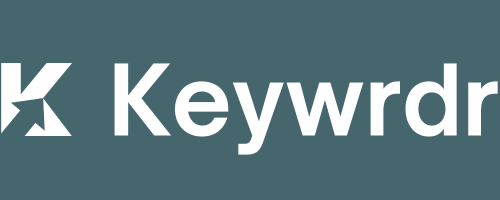- Identifying common SEO problems is crucial for effective resolution and enhancing site visibility.
- Key issues include difficulties in acquiring high-quality backlinks, achieving organic growth, and maintaining a high trust flow, all of which significantly impact SEO performance.
- Addressing SEO issues involves improving site structure, enhancing content quality, optimizing for mobile, speeding up page loads, securing quality backlinks, resolving technical SEO issues, and optimizing keywords strategically.
SEO, or search engine optimization, is a crucial component of digital success. It helps businesses become more visible online and reach their target audience more effectively. Yet, it is fraught with challenges that can perplex even seasoned marketers.
At its core, SEO is about enhancing your website’s visibility and ranking in search engine results, but a myriad of issues can undermine these efforts. Technical issues such as slow site speed, improper redirects, or poor mobile responsiveness can alienate users and discourage search engine crawlers from properly indexing your content. On the content front, lack of relevant keywords, poor content quality, or duplicate content can diminish your site’s relevance and authority from the perspective of search engines. Meanwhile, link-related problems, including broken links or having a profile of low-quality backlinks, can severely impact the trustworthiness and perceived value of your site.
This article will delve into the common SEP problems and issues, offering insights and practical fixes to help businesses improve their online presence and performance.
Broad Range of SEO Challenges
Understanding these SEO problems is more than a diagnostic exercise—it’s the first crucial step in developing a robust strategy to counteract them. Recognizing the specific challenges your website faces allows you to prioritize the most impactful solutions, tailoring your SEO efforts to produce the best results.
Struggling to Gain High-Quality Backlinks
One of the most significant challenges in SEO is acquiring high-quality backlinks. Backlinks are links from other websites that lead back to your site. Search engines view these links as votes of confidence; the more you have from reputable sites, the better. However, earning these links can be difficult. Strategies to enhance backlink quality include creating valuable, shareable content and engaging with similar industries to gain organic endorsements.
Difficulty in Achieving Organic Growth
Achieving organic growth requires a website to consistently appear in search results for relevant queries. Factors such as poor keyword optimization, inadequate content quality, and slow site speed can hinder this process. To overcome these obstacles, businesses must focus on optimizing their web pages correctly, enhancing the quality of their content, and ensuring that their site operates efficiently.
Low Trust Flow
Trust flow is a metric that measures the trustworthiness of a website based on the quality of backlinks it receives. A low trust flow indicates that a site’s backlinks come from suspicious or low-quality sources, which can severely impact SEO performance. Improving trust flow involves auditing backlink sources and striving to gain links from well-regarded, authoritative domains.
Website Auditing to Identify SEO Problems
Purpose and Process of Website Auditing
Website auditing to identify SEO problems is an essential practice for any business that wants to succeed online. An SEO audit evaluates a website comprehensively to find any existing issues that might be causing SEO underperformance. This includes checking for broken links, reviewing site structure, analyzing content quality, and evaluating the website’s mobile-friendliness.
Tools and Techniques
There are many tools available that can help businesses check SEO problems. These tools offer insights into areas where a website may be failing and provide recommendations for improvements. Here are three popular options that are widely used for SEO audits and continuous monitoring:
- Google Search Console. This free tool provided by Google is essential for anyone managing a website. Google Search Console offers a direct look at how Google views your site, highlighting crucial SEO information such as search traffic, performance, and issues that affect your site’s ranking.
It provides data on search queries, click-through rates, and rankings for various keywords. Additionally, it alerts users to errors such as broken links and indexing problems, and suggests the necessary corrective actions.
- SEMrush. SEMrush is a comprehensive tool that offers deep insights into the competitive landscape of your industry and your site’s performance. It aids in auditing your SEO, tracking the keyword strategy used by your competitors, and running an SEO audit of your blog.
The tool includes features for checking backlinks, estimating traffic, and identifying potentially harmful links that could lead to penalties. It also provides recommendations for on-page SEO improvements and content development strategies.
- Ahrefs. Known for its extensive backlink analysis capabilities, Ahrefs is crucial for SEO experts focused on link building and link quality assessment. It offers detailed information about backlinks and SEO rankings, along with tools for keyword research and content planning.
Ahrefs excels in tracking the backlink profile and the SEO health of your website. It helps identify which parts of your website need improvements and offers insights into the strategies used by your top-performing competitors.
By regularly conducting SEO audits, businesses can ensure they keep up with SEO best practices and maintain or improve their search engine rankings.
Special Focus on Technical SEO Issues
Faceted navigation is a powerful feature on e-commerce websites that lets users filter products by various attributes, such as size, color, and price. This functionality greatly enhances user experience by helping customers find products more efficiently. However, without proper SEO management, faceted navigation can lead to significant challenges that may adversely affect your website’s search engine visibility.
SEO Challenges of Faceted Navigation
The main issue with faceted navigation is that it can generate numerous URLs as users apply different filters. Each combination of filters might produce a unique URL, many of which may display similar or identical content. This situation results in several problems:
- Duplicate Content: Search engines might index multiple versions of the same page, which can be seen as duplicate content. This dilutes the perceived value of each page and can lead to penalties or reduced rankings.
- Split Link Equity: With multiple URLs, any inbound links that could have consolidated the authority of a single page are instead spread across multiple versions, weakening their overall SEO impact.
- Crawler Budget Waste: Search engines allocate a certain budget for crawling each site. Excessive URLs from faceted navigation can consume this budget quickly, leaving less capacity for the crawler to index other important parts of the site.
Strategies to Optimize Faceted Navigation
To mitigate the SEO risks associated with faceted navigation while preserving its user benefits, several technical strategies can be employed:
- Employing Canonical Tags: Use canonical tags to indicate to search engines which version of a URL is the master or preferred version. This helps prevent problems associated with duplicate content by directing all link equity to the canonical page, ensuring that the primary page gains the full SEO benefit.
- Robots.txt and Meta Robots Tag: Strategically use the robots.txt file to prevent search engines from crawling filter combinations that do not significantly alter content. Alternatively, meta robots tags can be used to control the indexing at a more granular level, blocking individual pages from being indexed.
- Parameter Handling in Google Search Console: Google Search Console allows you to inform Google how to handle URLs with specific parameters used in faceted navigation. This can help Google understand which parts of your site should be prioritized for crawling and indexing, reducing the crawl budget spent on unnecessary URLs.
- AJAX for User Interactions: Implementing AJAX (Asynchronous JavaScript and XML) for faceted navigation can prevent the creation of new URLs when filters are applied. With AJAX, the content on the page updates dynamically without requiring a new page load, which means fewer URLs for search engines to crawl and index.
- Creating SEO-Friendly URLs: For filters that significantly change the content (e.g., category changes), ensure that the resulting URLs are SEO-friendly, using readable keywords instead of long strings of parameters. This not only helps with SEO but also improves user experience.
Implementing Fixes for Common SEO Problems
Addressing common SEO problems effectively requires a combination of strategic planning, technical adjustments, and ongoing maintenance. Here’s a comprehensive guide to implementing fixes for the most prevalent SEO issues that businesses face, ensuring that your website not only recovers from these challenges but also thrives in a competitive digital landscape.
1. Improving Site Structure and Navigation
A well-organized website helps search engines understand your site’s content and its importance. Poor site structure can lead to significant navigation issues for both users and search engine crawlers.
Implement a logical hierarchy in your website’s architecture, ensuring that it is intuitive and consistent. Use breadcrumb navigation to further enhance usability and crawlability. This structure supports SEO by distributing page authority and ranking power throughout the site.
2. Enhancing Content Quality
Content is pivotal in search rankings. Common issues include thin content, duplicate content, or content that’s not optimized for relevant keywords.
Revitalize your content strategy by focusing on quality over quantity. Ensure all content is original, offers real value, and is targeted towards your audience’s interests and needs. Utilize tools like Copyscape to check for plagiarism or duplicate content and revise material to be unique and engaging.
3. Optimizing Mobile Usability
With mobile devices driving a significant portion of internet traffic, sites must be optimized for mobile to ensure a good user experience and meet Google’s mobile-first indexing criteria.
Implement responsive design, which adapts to different screen sizes and orientations. Test your website’s mobile usability using Google’s Mobile-Friendly Test and adjust elements like button sizes and viewport settings to improve user experience.
4. Speeding Up Page Load Time
Page speed is a critical factor for both user experience and SEO. Slow-loading pages can deter visitors and negatively impact search engine rankings.
Minimize HTTP requests, enable browser caching, and optimize images. Tools like Google PageSpeed Insights provide specific recommendations to improve load times. Consider switching to faster hosting or implementing a content delivery network (CDN) if necessary.
5. Securing Quality Backlinks
Backlinks are a cornerstone of SEO, but poor-quality links or spammy backlink profiles can harm your SEO efforts.
Conduct regular audits of your backlink profile using tools like Ahrefs or SEMrush. Disavow links from dubious sources through Google Search Console. Focus on earning high-quality backlinks through guest blogging, partnerships, and creating shareable content.
6. Addressing Technical SEO Issues
Technical SEO issues like incorrect use of tags, broken links, or improper redirections can severely impact your site’s SEO performance.
Regularly perform comprehensive technical SEO audits to identify and fix issues such as broken links, incorrect use of noindex or nofollow tags, and problems with XML sitemaps. Ensure that redirects are used correctly to preserve link equity and improve user experience.
7. Enhancing Keyword Optimization
Inadequate or improper keyword optimization can prevent your site from appearing in relevant searches, reducing visibility and traffic.
Conduct keyword research to understand what your audience is searching for and revise your content to include these keywords naturally. Use tools like Google Keyword Planner for insights into search volumes and competition. Ensure that keywords are integrated thoughtfully into titles, meta descriptions, headers, and body content.
Monitoring and Maintaining SEO Health
Continuous Monitoring and Updating
SEO is not a set-it-and-forget-it element of your digital strategy; it requires ongoing attention and adaptation. Regular monitoring of your SEO performance using tools and analytics is crucial. Keep track of changes in search engine algorithms and adjust your strategies accordingly to maintain and improve your rankings.
Learning from Analytics
Analytics offer invaluable insights into how users interact with your site and where you might be losing potential traffic. Use this data to refine your SEO strategies continually, focusing on areas like reducing bounce rates, increasing time on site, and converting visitors into customers or followers.
Choosing Reputable SEO Service Providers
When the complexities of SEO become overwhelming, partnering with a professional SEO service provider can be a wise decision. These experts bring a wealth of knowledge and specialized tools that can significantly enhance your website’s performance in search engine rankings. Hiring professionals also allows you to focus on other aspects of your business while they handle the intricacies of SEO, from technical audits to content optimization.
Conclusion
Recognizing and addressing SEO problems is vital for any business looking to thrive in the digital marketplace. By understanding common issues, regularly auditing your website, and implementing targeted fixes, you can significantly enhance your site’s SEO performance. Stay proactive and informed to ensure that your business remains competitive in the ever-evolving landscape of search engine optimization.
Resources
Find out why your Trust Flow has dropped.
https://blog.majestic.com/development/find-out-why-your-trust-flow-has-changed/
Google Search Console
https://search.google.com/search-console/about
An empirical study of web site navigation structures’ impacts on web site usability
Mobile site and mobile-first indexing best practices




